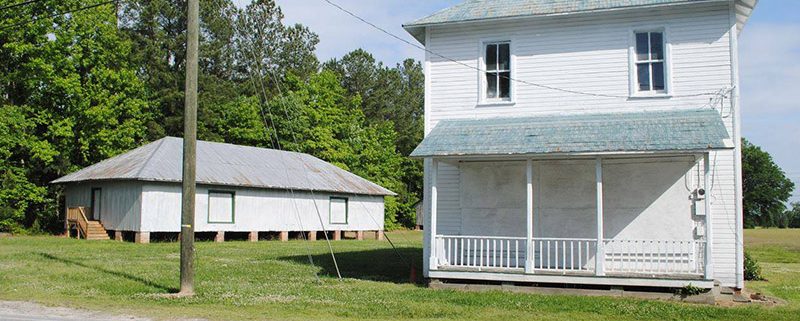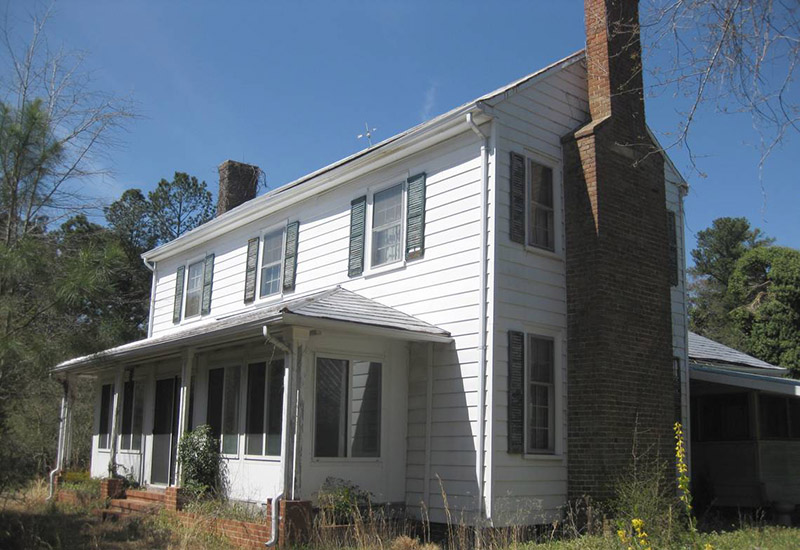Cary Residents Consider the Future of Historic Properties
Cary, NC – Cary’s history goes back hundreds of years and the town owns buildings and property from the early 20th and 19th Centuries that still stand. During May, local residents were asked to give their thoughts on what should be done with these pieces of Cary’s history.
On both Thursday, May 17 and 31, 2018, the Town of Cary held public meetings where people were invited to come and learn about the historic properties the town is looking at as well as give their thoughts on what should be done with them.
Specifically, these meetings were about the C.F. Ferrell Store, the Barnabus Jones House and the A.M. Howard Farm which is being used as the Good Hope Farm.
Before community members shared their thoughts, each site had a presentation to give context about their history and significance. People were also presented with packets with maps and information on size, historic details and building quality.
“The condition of each structure will help determine what can be done with it,” said Paul Kuhn, Cary’s facilities design and construction manager.
Jason Hart gave the presentation, representing CUBE design + research – consultants with the Town of Cary to collect and analyze public input on the properties.
“We want to determine the will of the people as well as look at what’s physically possible,” Hart said.
A.M. Howard Farm
The A.M. Howard Farm was a homestead tobacco farm started in 1910 and was renowned in the area for being able to produce more tobacco per acre than many of the larger surrounding farms. The site is also significant for having one of the few standing terracotta drying barns for tobacco. The terracotta construction was an experiment at the time to better trap heat during drying, but this heat meant the brick building would expand and contract frequently, which is why this particular barn is in the worst condition of any of the buildings on all three sites.
The north half of the property is now being used for the Good Hope Farm in West Cary, which is an urban community farm that started in August 2016. Some of the buildings on the property are being used by the urban farm though several large barns and the central farm house that faces Morrisville Carpenter Road are not.
In talking with members of the public at the meeting, they believe the Good Hope Farm project has put this land on the right path already and most people would like to see the remaining land and buildings used to educate people about farming, both the history of how farming used to be done and the modern agricultural practices in place now.
For other related uses, people suggested the land could be used to put a Farmers’ Market for those farmers using Good Hope Farm. Because the property is nearly 30 acres, other meeting members said this land could be used for events in the vein of Spring/Lazy Daze or even a Shakori Hills-inspired music event, or it could be used for a playground and picnic space.
Barnabus Jones House
The Barnabus Jones House is the oldest of the three properties, initially built in the 1820s. There are also some buildings that were built or moved later, the youngest being built in the 1950s. The 3.33 acres comes from 8,000 acres originally earned by a Jones family patriarch who was a captain in the American War of Independence and got the land in exchange for military service.
There are several buildings on the property, including a main house that is in “good shape” according to analysts, as well as a barns for grain, cider and feed storage, a detached school house that was also used as a kitchen and a living quarters that are believed to have housed enslaved people, then later used as a general housing unit.
Because of its age, this is the site most people wanted to see preserved as a museum or standing historical site. One group said the three buildings they most would want preserved are the main house, the school house and the suspected slave quarters, but would like to see the barns and other buildings saved if possible. Included in preserving this site as a museum was the idea of showing children and younger people what farm life was like back in the day and living conditions from the time.
One group said the historic sites should be preserved but some of the smaller buildings could be used for other uses, mentioning everything from a wedding venue and winery to an animal shelter. The land was also proposed as a possible festival space but one group added any work done here would need to include more accessible paths leading from Jack Smith Park to the site.
C.F. Ferrell Store
The C.F. Ferrell Store saw the most diversity in ideas of any of the three properties. Built in 1928, the store and its two warehouses sits near the A.M. Howard Farm. The site was used as a general store and went to the Edwards family in the 1930s, when Charlie Ferrell died and is 3.15 acres.
Among the input gathered, there were people who wanted to preserve the store as a museum, with the site not only returned to its original historic look but stocked to look like it would have when it was an operational store. The second floor of the store were living quarters for the families that operated it and community members also wanted to see these returned to their original state to show visitors how people would have lived at the time.
There were also those at the meeting who wanted to see the buildings put to a new use. Several people mentioned using the store as a gallery space, particular the second floor. As for the warehouses and large field behind the buildings in between Morrisville Carpenter Road and Carpenter Fire Station Road, there was an idea to use the large warehouse as a music venue and use the field for a drive-in movie site. The larger warehouse is around 2,500 square feet with an eight foot ceiling.
There was also a third group that wanted to see the store turned back into a functional store, either for food or as a boutique. Several people also said Cary has a lack of community gathering spaces and this site would serve that purpose well.
Ideas for these three properties are still being collected by the Town of Cary so if you have any input, make sure to reach out and share them.
Story by Michael Papich. Photos by Lindsey Chester and the Town of Cary.








It’s interesting that folks were thinking along the lines of the AM Howard Farm being used for a Music Fest. We did look at that site for Fest in the West. We ended up rejecting it because of the road structure, size of the site and lack of parking. There would need to be considerable grading, clearing of land and improvements to park not only festival-goers but staff and vendors to make that work. That triangle of roads convening there, make all of that a super Big challenge. Add to that the nature of the adjoining roads (2 lane country roads) and you have a traffic nightmare.
Very interesting article, about a topic of widespread concern…
Thanks Michael for a thorough report on this important topic. I am delighted that the public turned out to offer many great ideas. I look forward to preserving these historic properties for the benefit of our community.